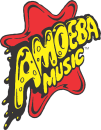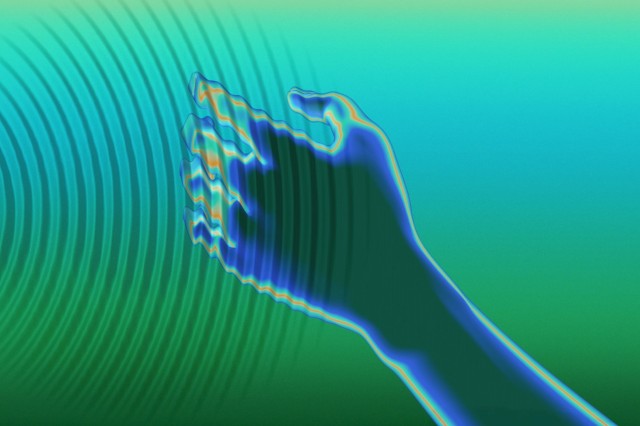Experiencing Sound
DJ Kurs, Artistic Director of Deaf West Theatre, who will join us for a discussion at First Fridays on May 2, shares his thoughts about how the deaf and hard of hearing experience sound and music.
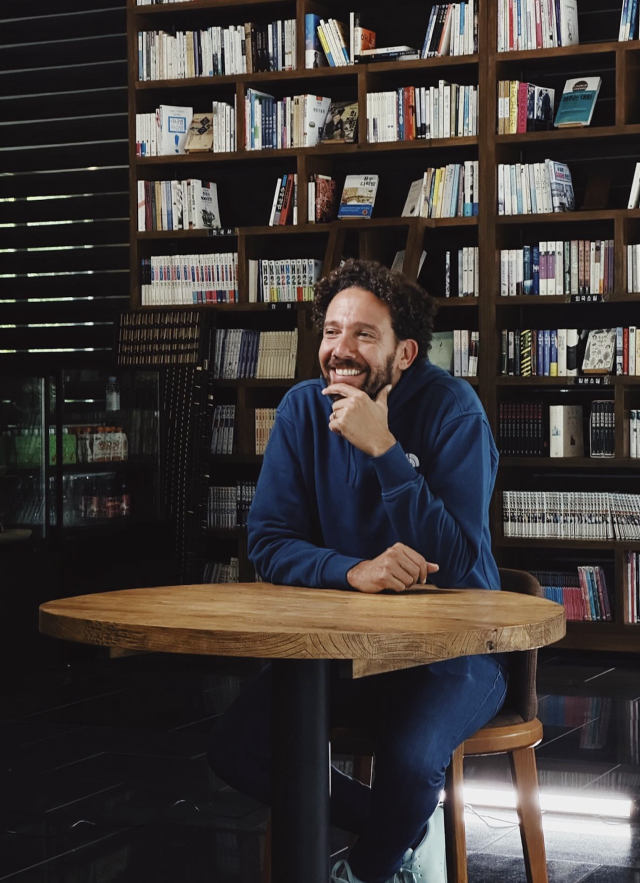
DJ Kurs has been a driving force in redefining the possibilities of theatre since becoming Artistic Director of Deaf West Theatre in 2012. Under his visionary leadership, Deaf West has produced a series of groundbreaking and award-winning productions, including the critically acclaimed Opera with the Los Angeles Philharmonic Fidelio and the revival of Spring Awakening which he guided from an intimate 99-seat Los Angeles production to Broadway, where it captivated audiences and garnered multiple Tony Award nominations. Beyond his work on stage, Kurs is a passionate advocate and influential voice within the Deaf community.
Q: Please share with us the many ways the deaf and hard of hearing experience sounds and music.
KURS: Imagine walking into a room and feeling the bass pulsing through your feet before you see the speakers. Imagine catching rhythm in the flicker of lights or the sway of a dancer’s shoulders. For many deaf people, sound is not something that travels through the ear. It moves through the body. It’s in the floorboards, in the vibrations that shake the seat beneath you, in the shared silence before a drop. Sign language brings a song to life with movement that carries emotion, rhythm, and poetry. Fingers dance, faces shift, and suddenly a story is unfolding that you don’t just watch. You feel it. You live it. Sound becomes a communal experience when a room of people react together to a moment they all understand in different ways. That’s music too.
Q: People talk about inaudibility using words such as the “sound of silence” for instance. Are there particular terms or phrases that may be insensitive to people in the deaf and hard of hearing community?
KURS: I believe language matters most when it reflects mindset. Using the right term isn’t as important to me as approaching with respect, openness, and a willingness to learn. Some people prefer “deaf,” others identify as “I have hearing loss,”—and that choice is personal. What matters is the intention behind the words. Are we making room for someone’s full story? Are we staying open to being corrected, to listening, to growing? That mindset creates real connection. Words can evolve, but curiosity and humility go a long way. Some phrases, even when said casually, carry a lot of weight. “Falling on deaf ears” can imply that not hearing is the same as ignoring. Calling someone “mute” ignores the power of sign language as a full, expressive language. And saying someone “suffers” from hearing loss or calling them “hearing impaired” can suggest that something’s broken, when in reality many people see deafness as part of their identity, culture, and pride.
Q: How are museums, concerts, and other venues bringing accessible experiences to all? What are the best examples today of how cultural leaders make musical experiences more inclusive?
KURS: The best experiences don’t just accommodate. They invite. They ask, “What if we built this differently, from the ground up?” At Deaf West’s opera "Fidelio" with the Los Angeles Philharmonic, sign language wasn’t added in after the fact. It was woven into the heart of the experience. You could feel Beethoven’s story not only in the music, but in the shape of every sign, every pause, every movement. Museums have brought in deaf docents who guide you through art by showing, by signing, by shifting how we think about narrative. Across the country, haptic technologies let audiences feel rhythm in their bodies. Projected captions appear at our shows, concerts, clubs, and theaters in inventive, seamless ways. Performances with integrated ASL turn concerts into visual poetry. These moments reshape space in a way that feels completely natural—and make you wonder why it wasn’t always done this way. They ask us to expand our imagination of who the audience is, and how stories can be told, and to create communal, welcoming spaces.
Q: Can you recommend poetry, novels, studies, any resources to learn more about how the community experiences sound?
KURS: Christine Sun Kim’s art and writing explore the relationship between sound, language, and identity. Her TED talk and her current exhibition at the Whitney Museum in New York are both worth exploring. TikTok and Instagram feature ASL covers of popular songs by deaf creators, offering creative ways of engaging with music visually. Deaf West’s collaborations with Disney can be found on YouTube, where ASL storytelling is featured in music videos. Films like "CODA" and "Sound of Metal" have brought wider attention to deaf experiences and the complexities around sound and identity. "Seeing Voices" by Oliver Sacks offers a thoughtful look into deaf history, language, and culture.
Q: I’d love it if you could elaborate on how Deaf West is, as you say on your website, “the rare intersection where Deaf and hearing artists come together, creating a unique space where connection transcends language.”
KURS: Picture a world where language moves through the air, where it is seen as much as it is heard. Where deaf and hearing artists don’t just share space; they share a common language and a vision, where communication flows through both the eyes and the ears. At Deaf West, stories are told in two languages at once, with neither one taking a back seat. Sign language carries rhythm. Voice carries tone. Together, they create a third language, something new, something you feel in your bones. This is not just accessible theater. It is a reimagining of what theater can be. It is where boundaries fall away and connection takes center stage. And it doesn’t all happen on stage. It happens in the audience too. I love the way deaf and hearing theatergoers enter the same space and engage with each other. It creates a kind of shared presence that is rare. There are not many places in the world where that kind of interaction feels this natural, this intentional, this alive.
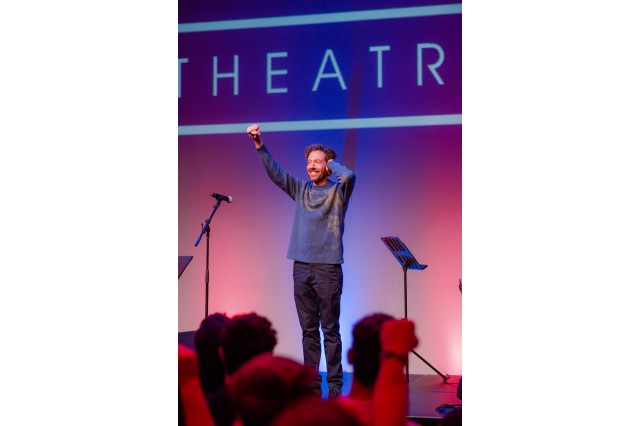
DJ Kurs, Artistic Director, Deaf West Theatre

Gustavo Dudamel and Deaf West Theatre partnered on an innovative production of Beethoven's opera "Fidelio."
1 of 1
DJ Kurs, Artistic Director, Deaf West Theatre
Gustavo Dudamel and Deaf West Theatre partnered on an innovative production of Beethoven's opera "Fidelio."
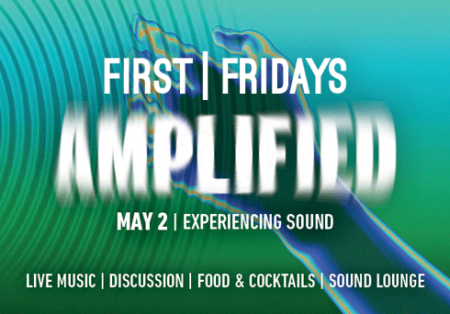
The 2025 First Fridays season turns the volume up on sound and music. Join us as we amplify unique voices, perspectives, and dynamic music after-hours.
MEDIA PARTNER

EVENT PARTNERS

